The Visitor Center is undergoing a major renovation and will not be open to the public until 2018. There is a temporary one with park rangers and a gift shop until then.
We picked up the Wright Brothers National Memorial brochure that also has a map of the site.
We began our walking tour at the 1903 reconstructed camp where Wilbur and Orville Wright worked and lived. When they first arrived in Kill Devil Hills, NC, in 1901, they built a hangar/workshop and lived in tents. The following year they moved into the workshop, and by 1903 added the larger hangar.
By the 1890s, the Wright brothers had a respectable small business in Dayton, Ohio. Wilbur was four years older than Orville, and generally considered quiet and studious. Orville was more outgoing, but both had intuitive mechanical ability and analytical intelligence. Fascinated by the concept of manned flight, the death of Otto Lilienthal German glider enthusiast, in a flying accident; plus, the successful unmanned model flights of Samuel Langley in 1896, fueled their imaginations. By 1899, the brothers were devoted to the goal of human flight. They came to the realization that "it is possible to fly without motors, but not without knowledge and skill."
Wilbur and Orville made thousands of glider flights from Kill Devil Hill, and several other large sand dunes nearby. This finely honed their flying skills and enabled them to understand the engineering requirements of a manned flight. The location of where the first, successful, manned flights began on December 17, 1903 is marked with the First Flight Boulder (erected in 1928).
First Flight Markers are placed at the end of each of the four flights the Wright brothers completed that day. The first flight lasted just 12 second and was 120' in length. The second, 12 seconds, as well, but was 175'. The third was 15 seconds and 200'. But the fourth flight lasted a whopping 59 seconds and was 852'. The key success factors were: a manned machine left the ground on its own power; moved forward under control without losing speed; and, landed on a point as high as that from which it started.
And manned fight began. People could fly for routine travel, an aircraft broke the sound barrier, and a man walked on the moon within two generations of the work of the Wright Brothers. Wow! I love standing at the exact place where something so historic occurred.
We followed the sidewalks to the top of Kill Devil Hill where the 60' Wright Brothers Monument is situated. In the front of the monument are busts of Wilbur and Orville.
The Atlantic Ocean can be seen in the distance from the top of the hill. Carrying the heavy gliders up the sandy hill was exhausting work for the many test flights.
Also visible from the top of Kill Devil Hill is the December 17, 1903 Sculpture by Stephen H. Smith. It was donated by the State of North Carolina to honor the memory of Orville and Wilbur Wright and dedicated in 2003.
We decided to descend the hill and return to our car. From there we drove to the sculpture to get an up-close look.
The bronze and stainless steel sculpture (12,000 pounds) is a life-size representation of the aircraft and individuals at the first 12-second flight in 1903. Wilbur steadied the wing during take-off.
John T. Daniels, a member of the near-by US Life-Saving Service at Kill Devil Hills, took the now famous photograph of the first flight. Three other individuals witnessed the flights as well (front back to front): Johnny Moore (16-year-old hunting and fishing guide in the Outer Banks); Adam Etheridge (member of the US Life-Saving Service who became a life-long friend of the Wright brothers); and, W. C. Brinkley (lumberman who happened to be at the Life-Saving Station when the Wrights asked for assistance).
The Wright brothers built a 60' wooden rail with metal stripping to provide a hard, yet smooth surface for takeoff. The sand had proven to be much too soft.
Willis Dough, another member of the US Life-Saving Service, assisted the Wrights during glider test flights; these first four flights on December 17, 1903; and, worked with them during their 1908 flights at Kitty Hawk. Orville was the pilot of the first flight.
It's a lot of fun to walk around this large sculpture imagining what it must have been like that day! I know there will be many more exhibits for visitors when the new Visitor Center opens.
It was a bright sunny day when we visited, so we enjoyed the outdoor hike (about 2 miles) very much. Leashed dogs are permitted on the grounds (which is always a bonus for us). Sadie enjoyed learning about the Wright brothers, too. Ha ha.
For additional information about the Memorial, go to www.nps.gov/wrbr.
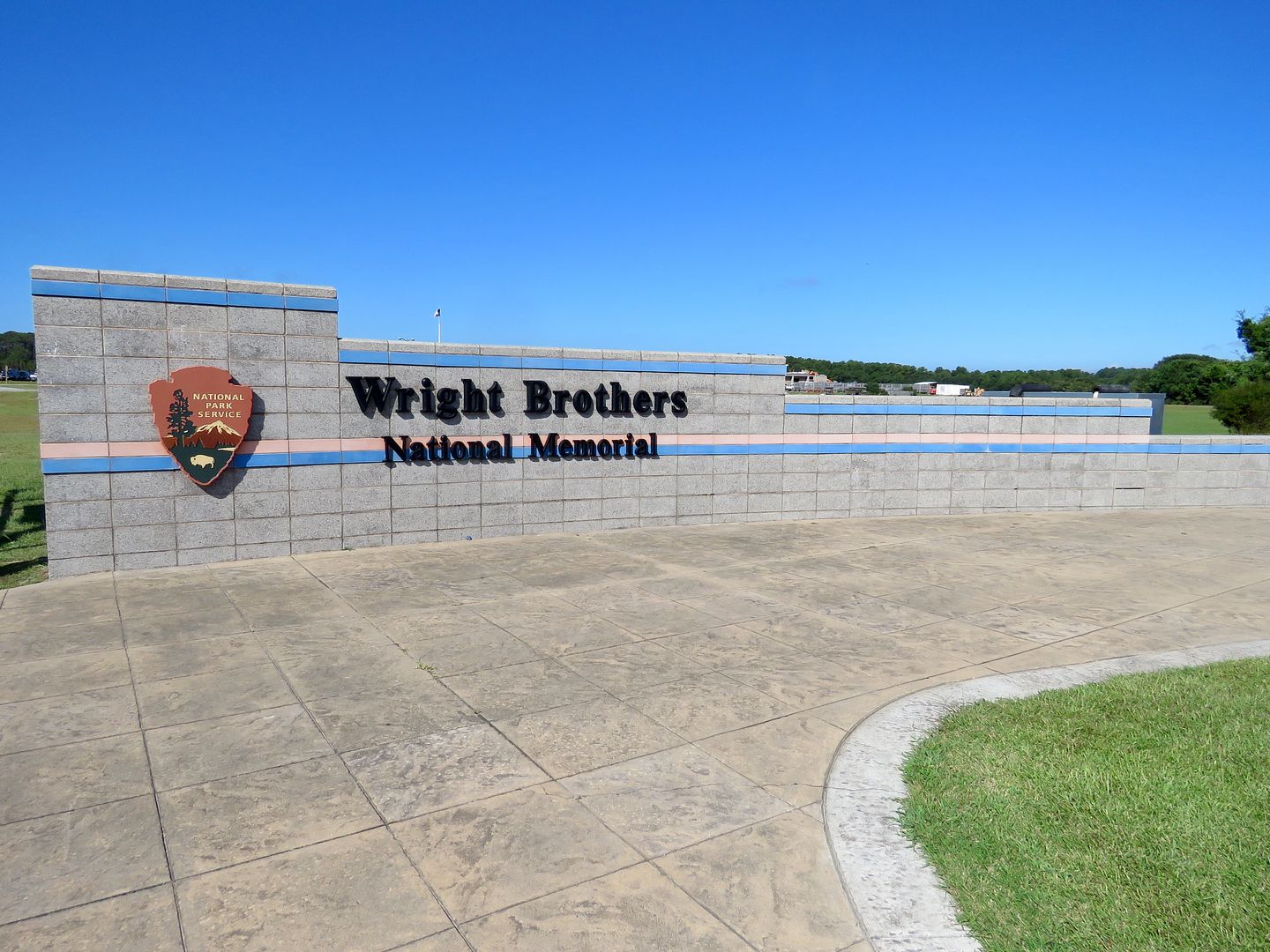
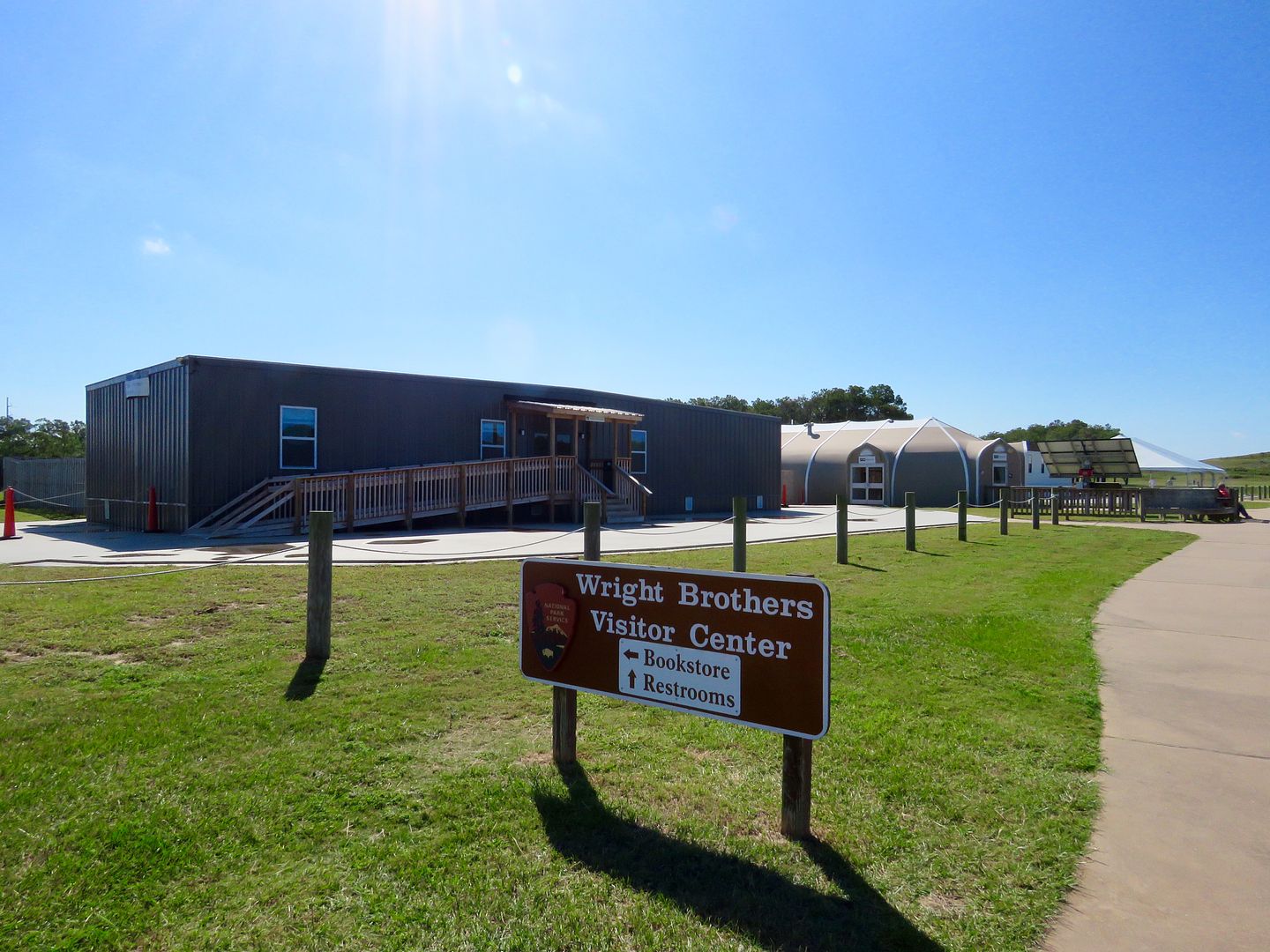
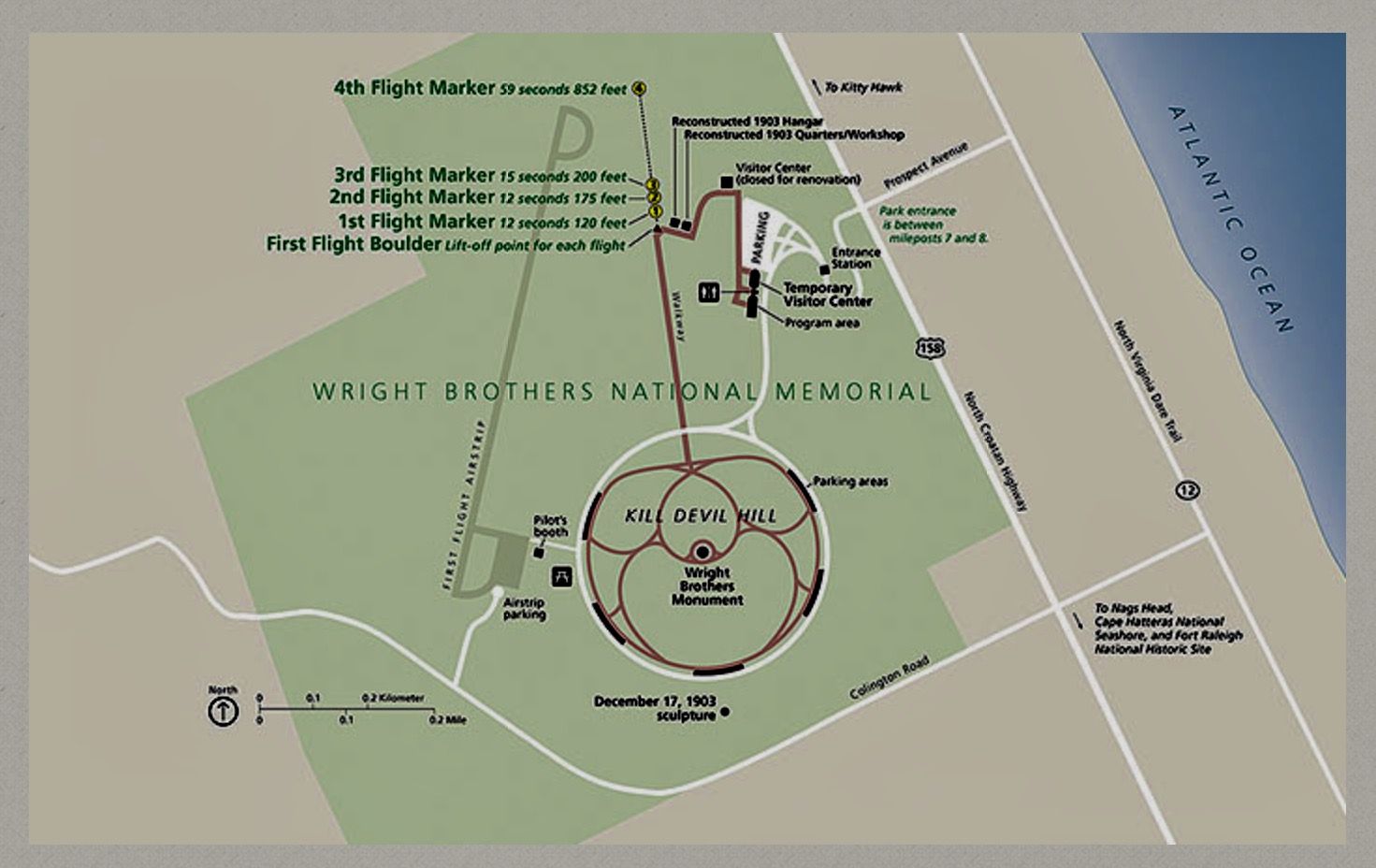
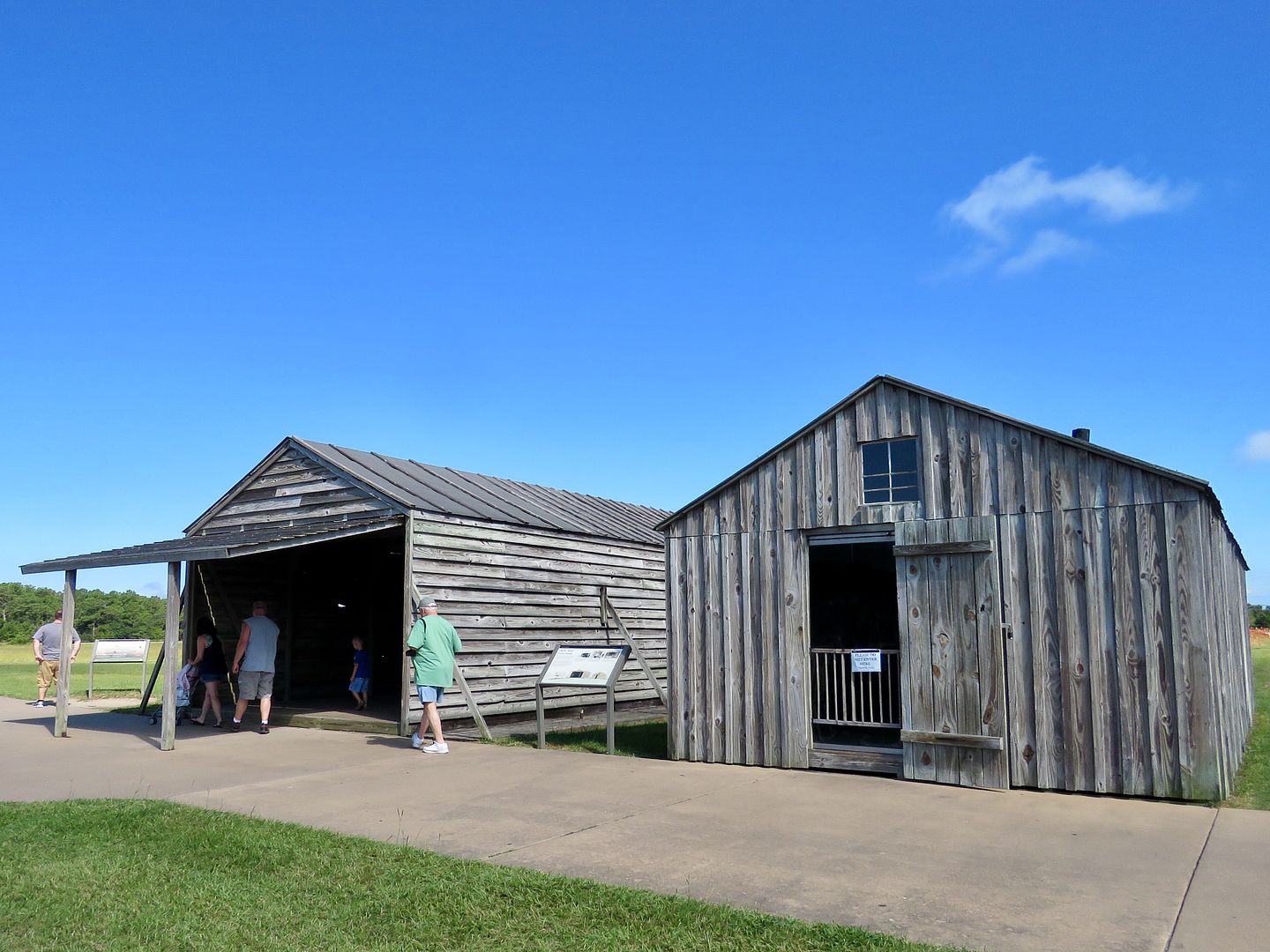
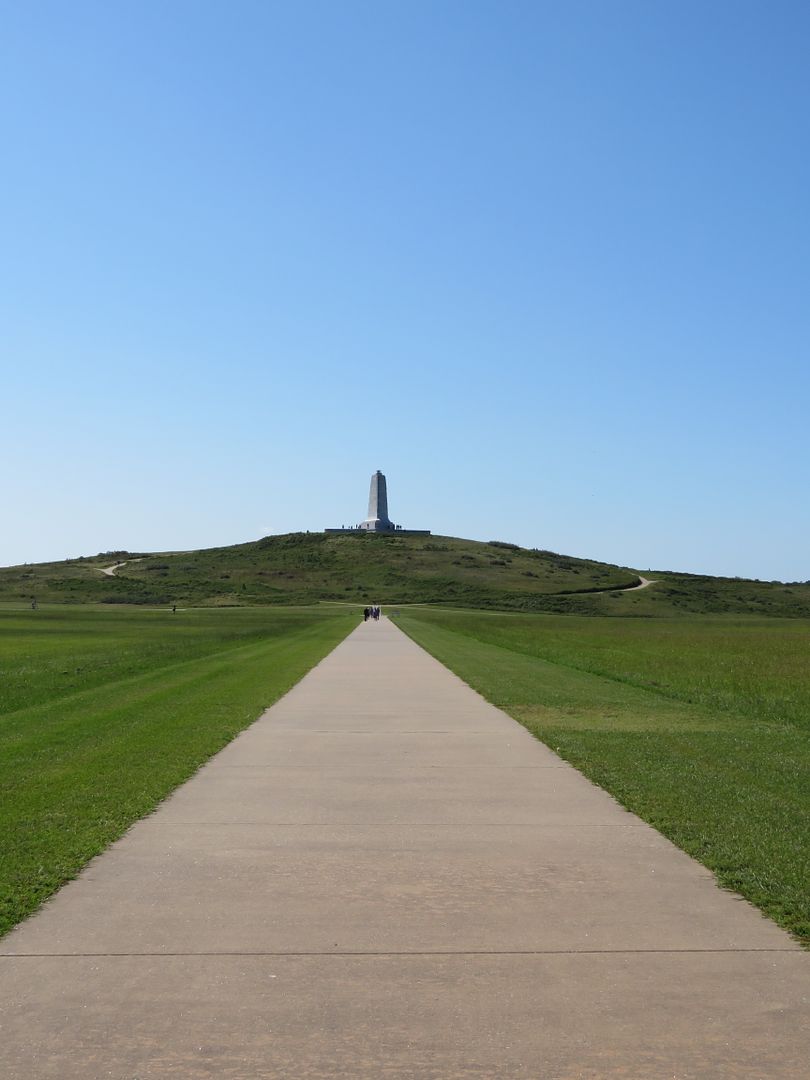
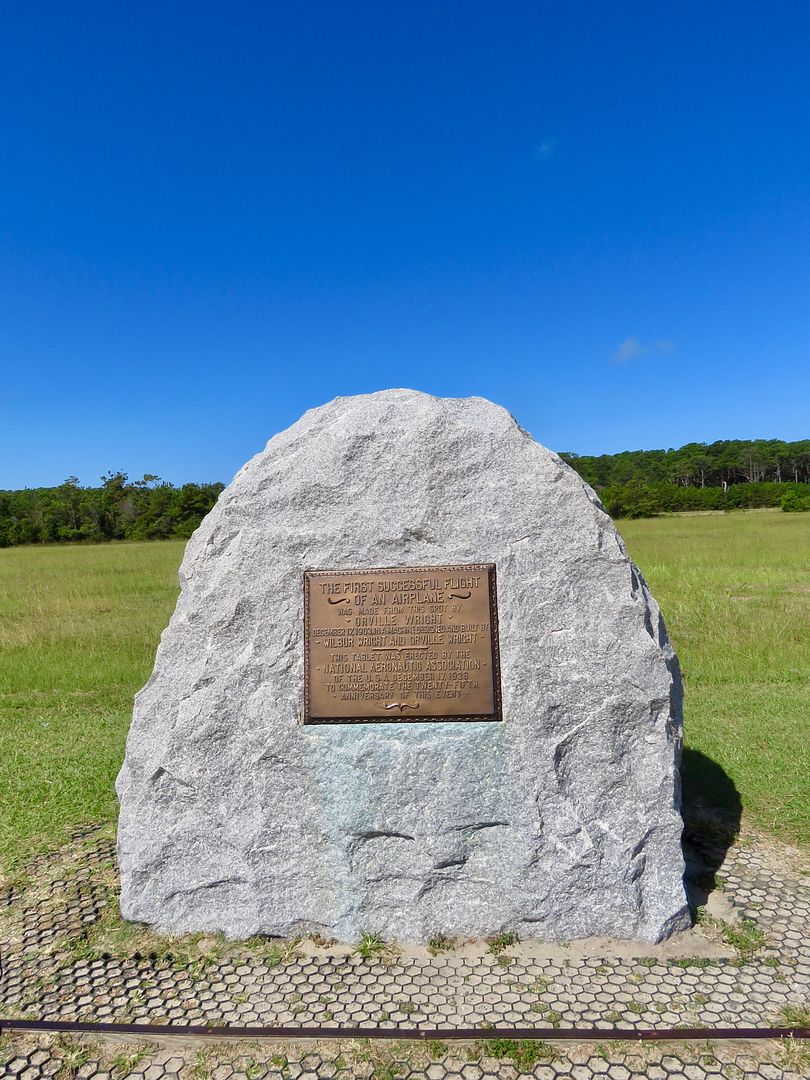
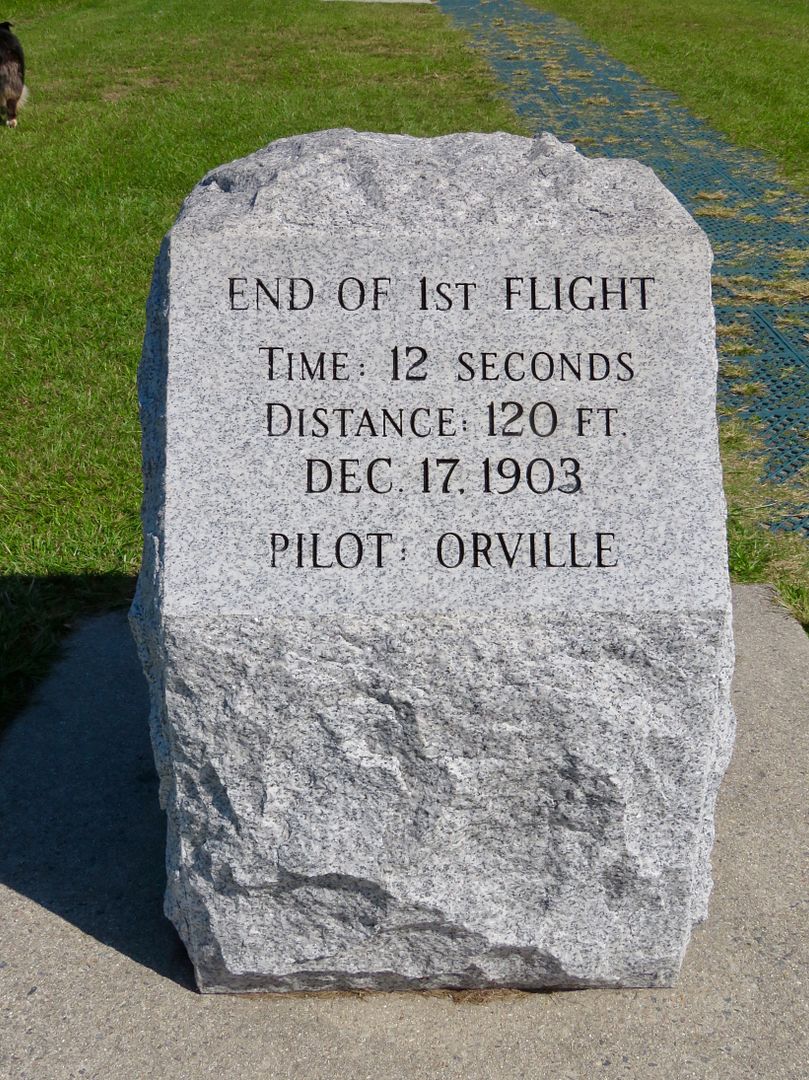
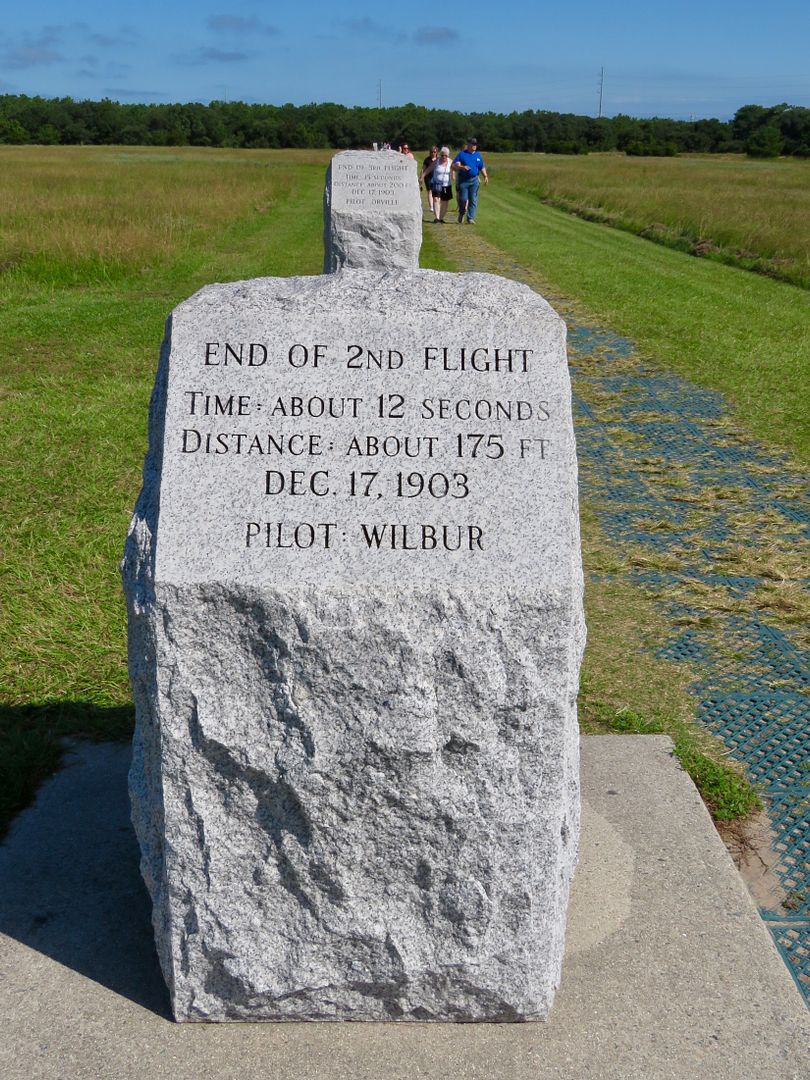
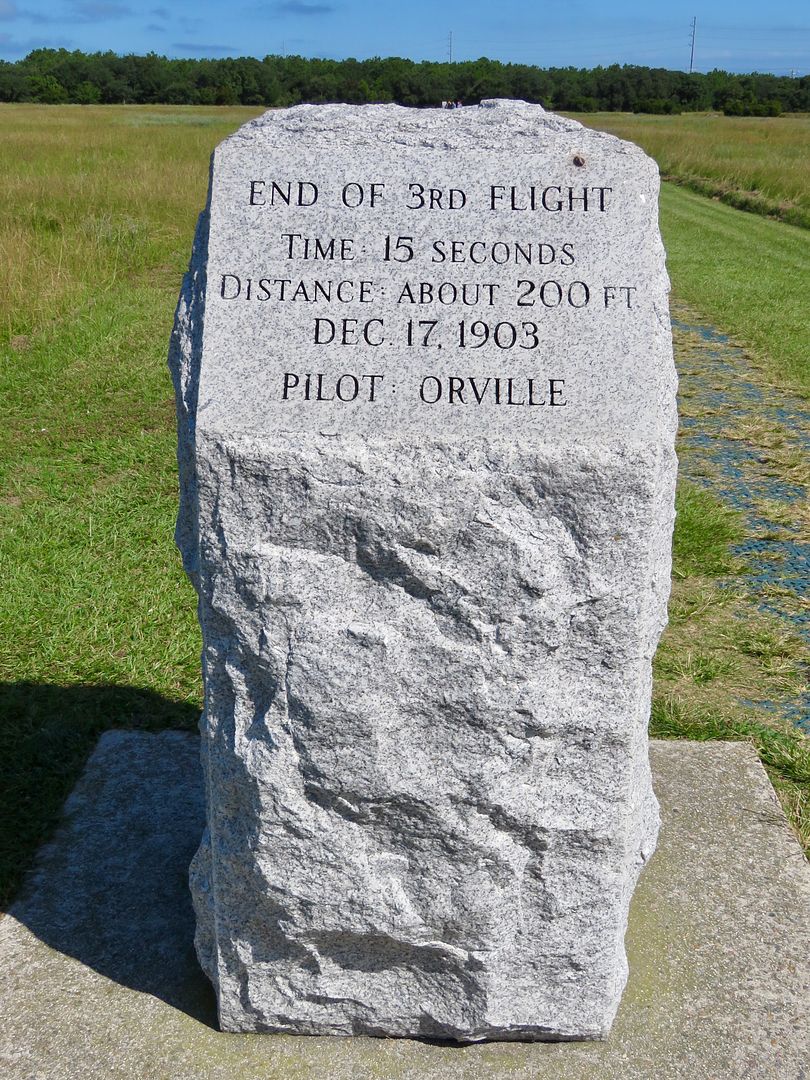
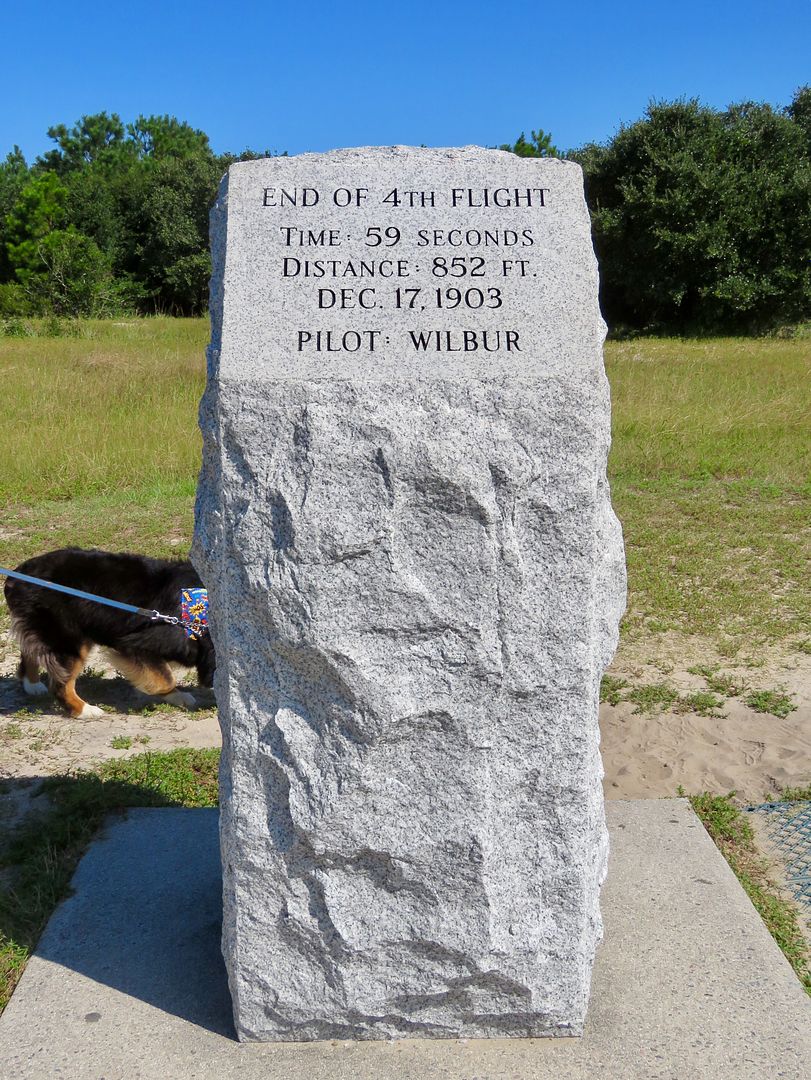
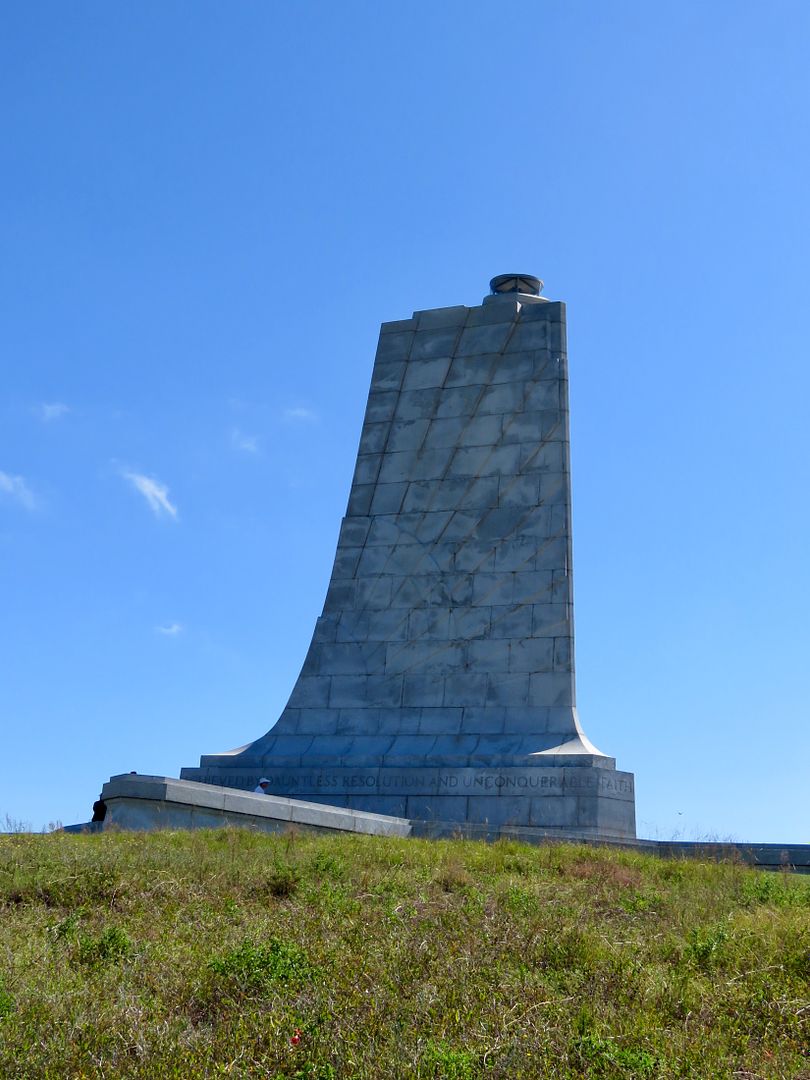


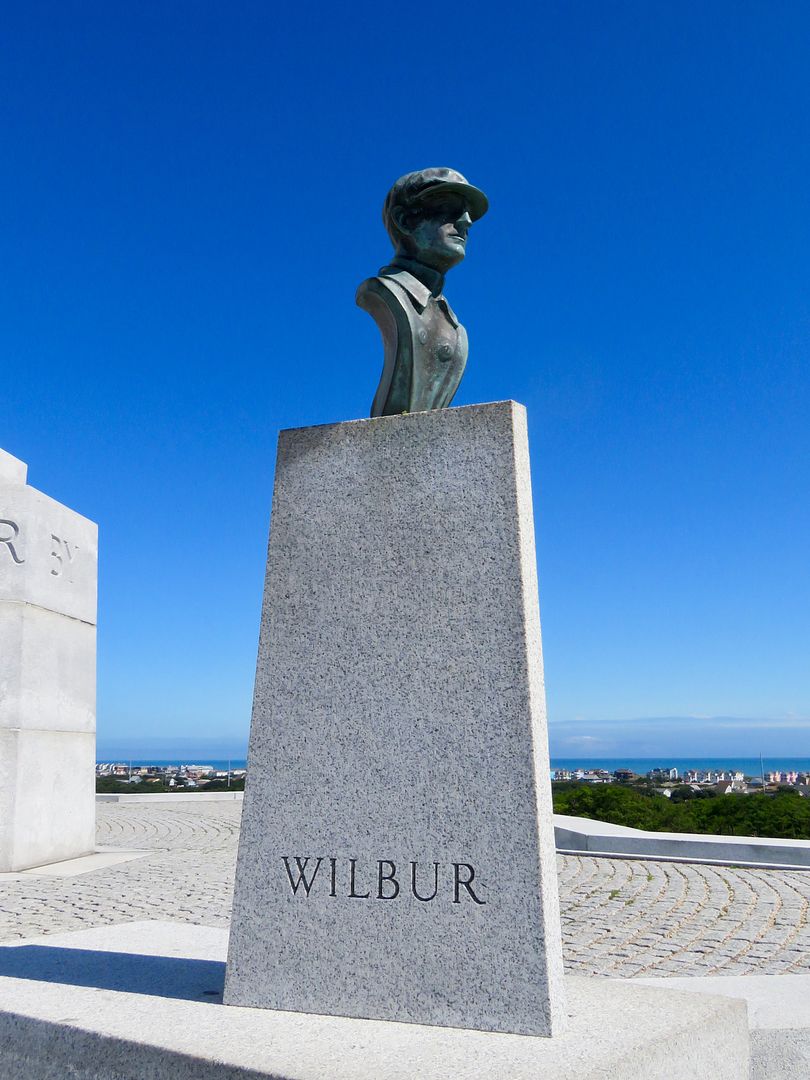
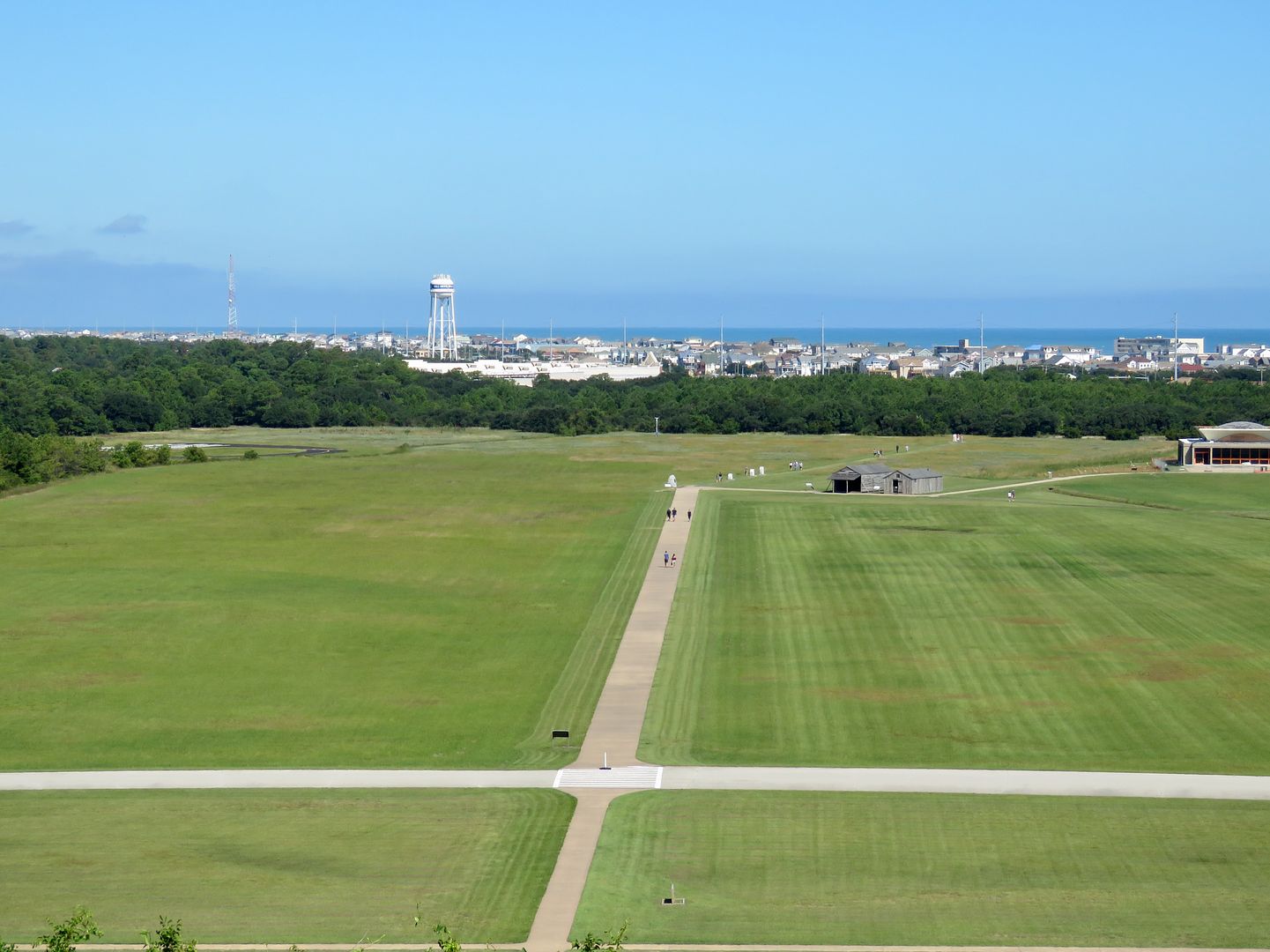
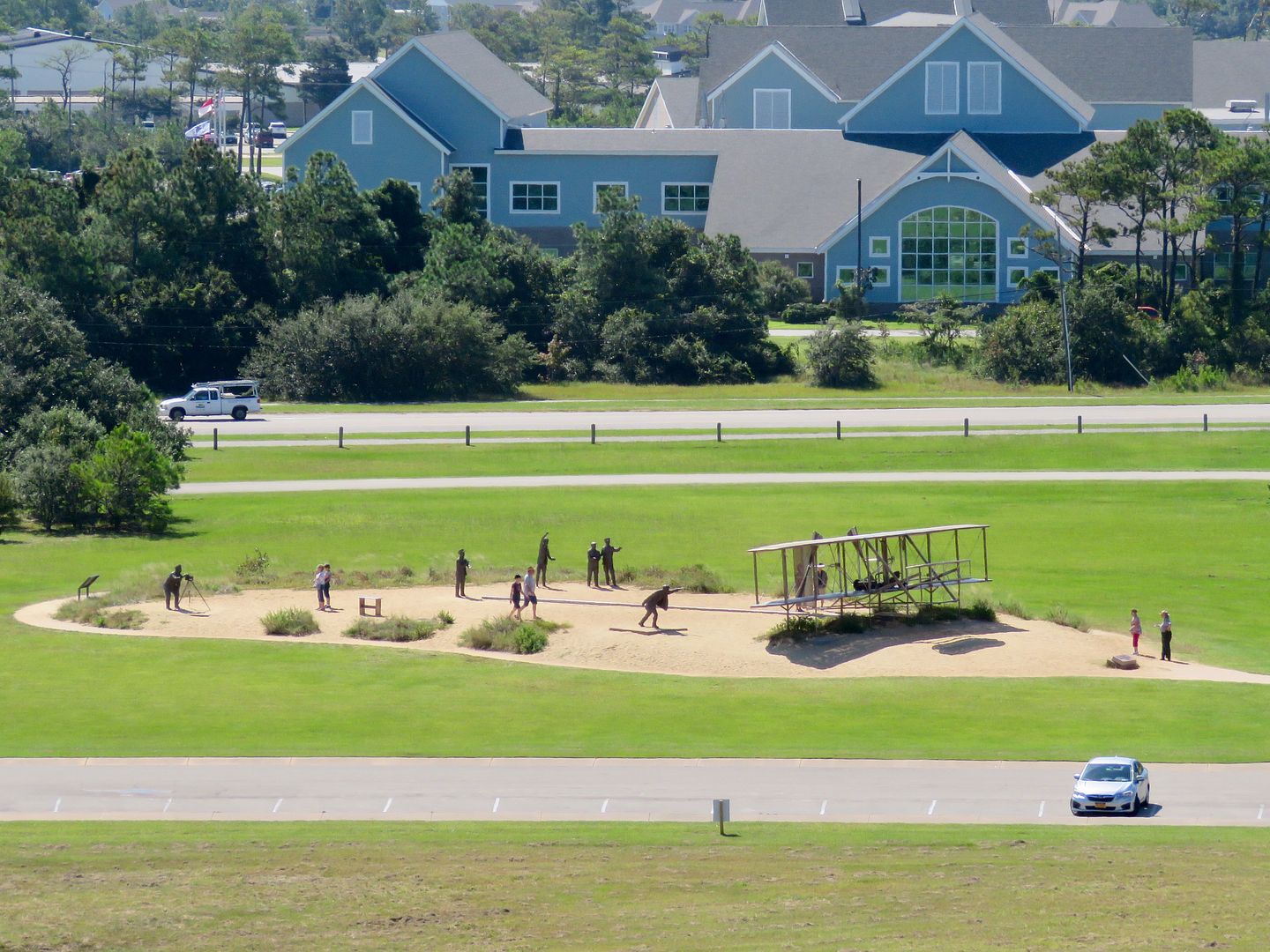
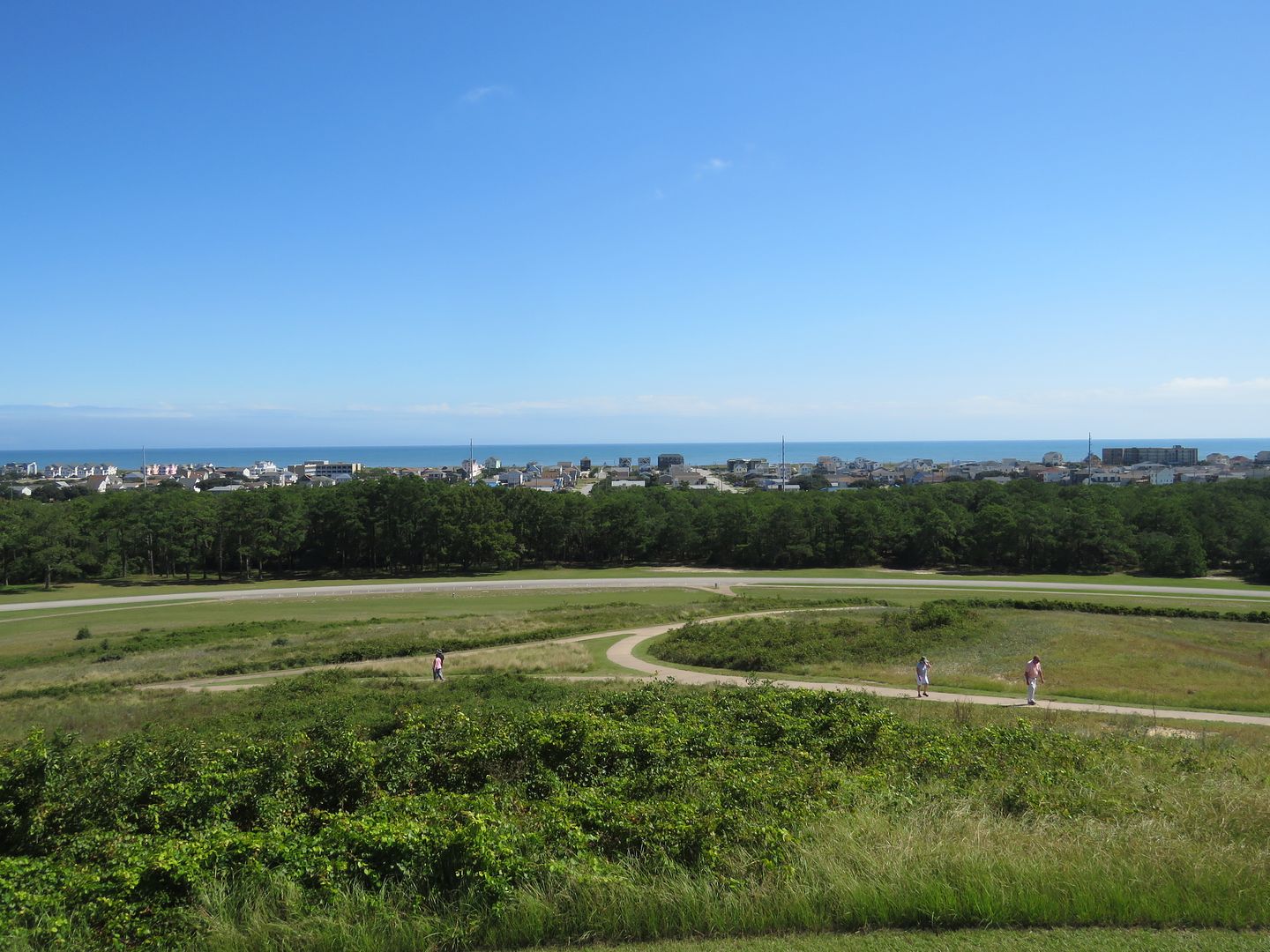

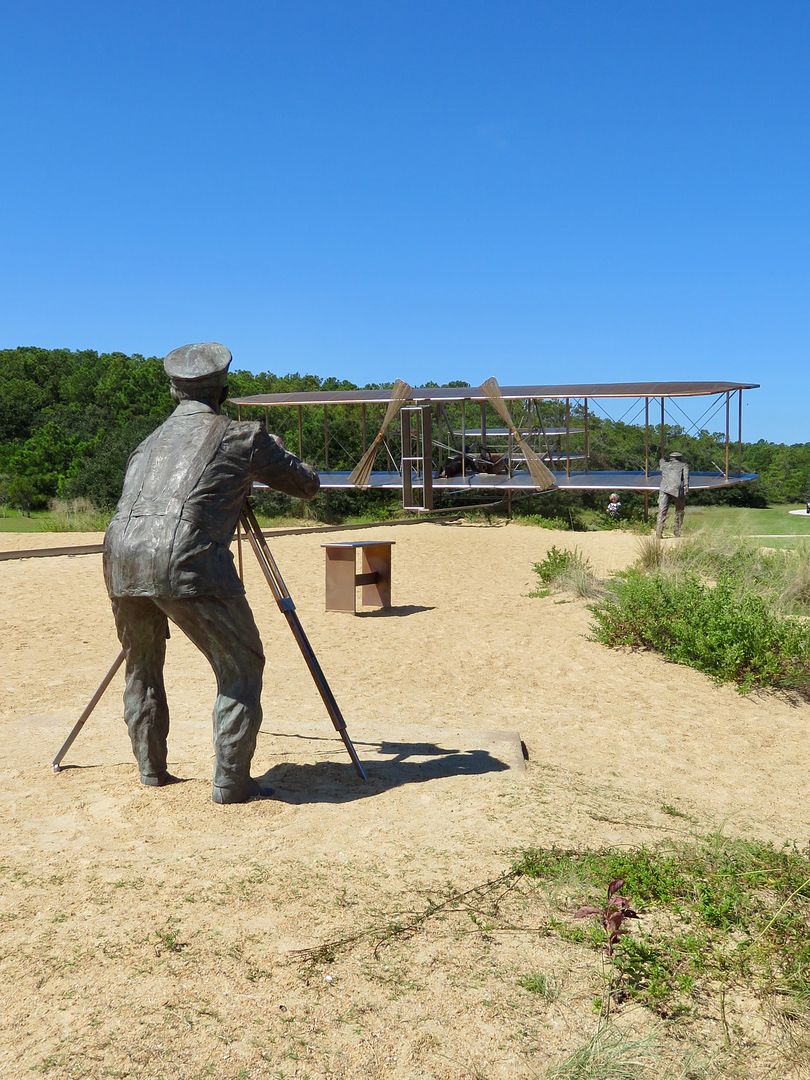
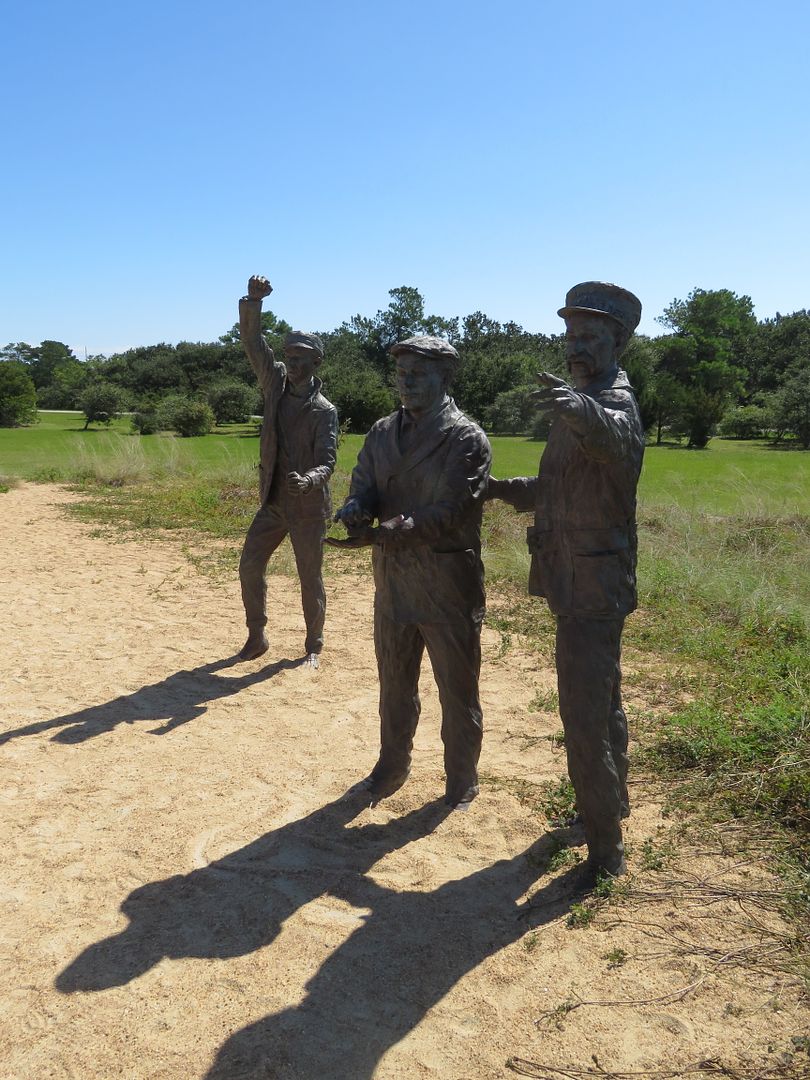
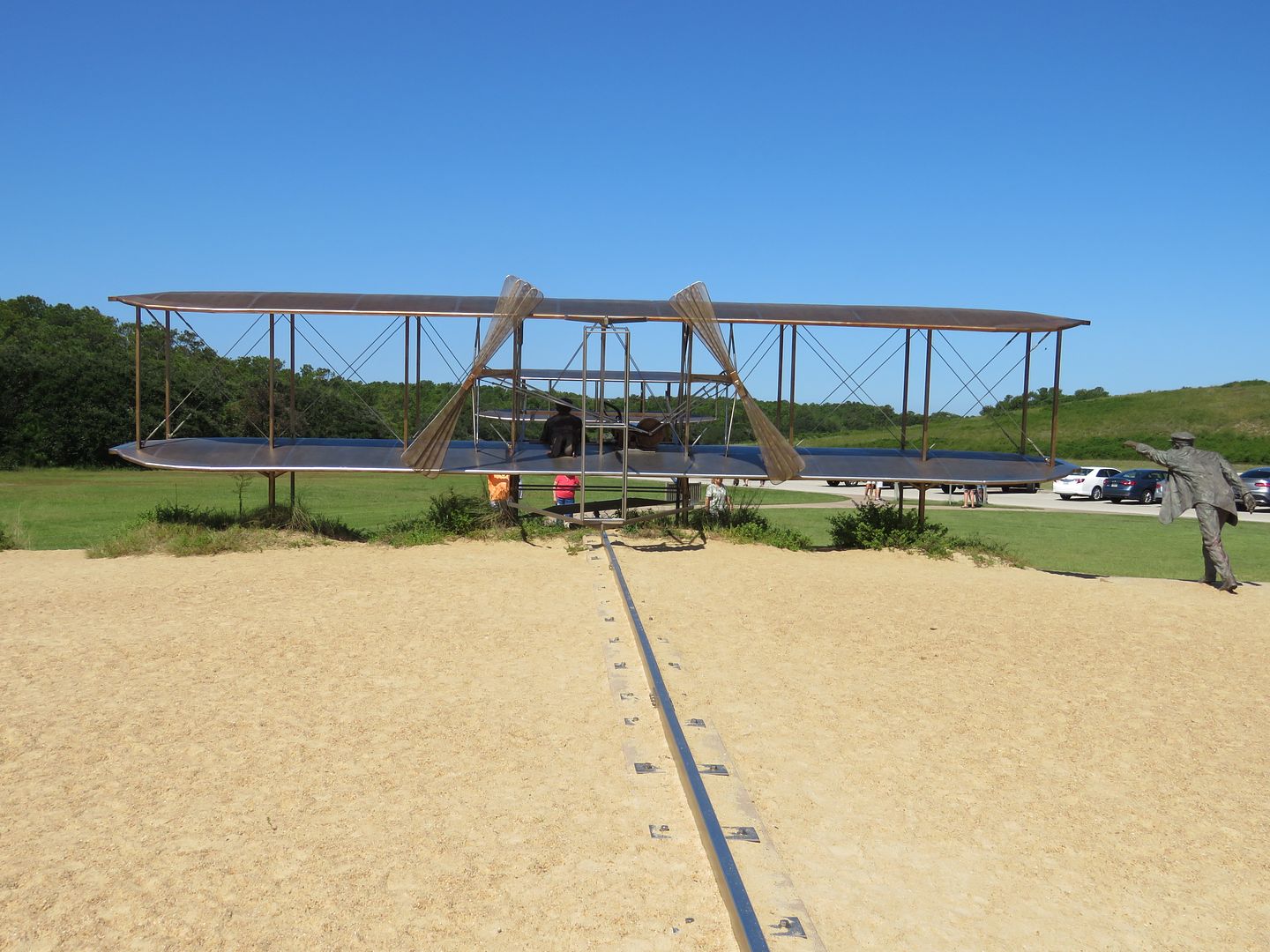
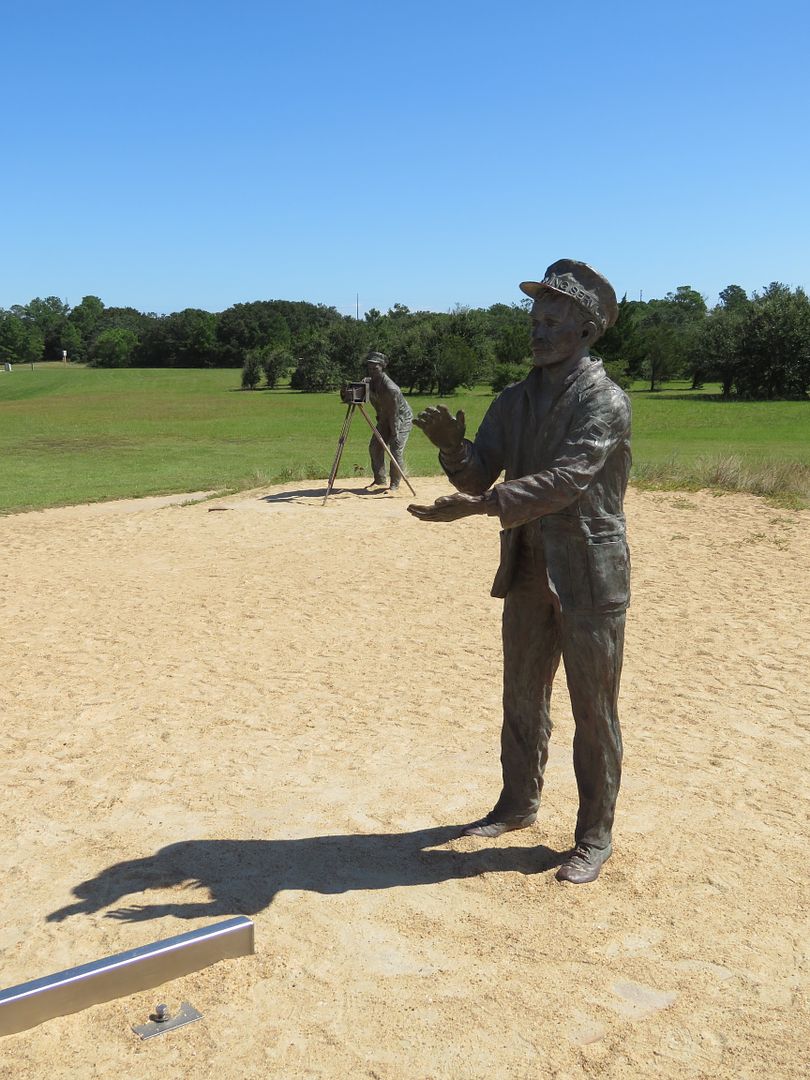
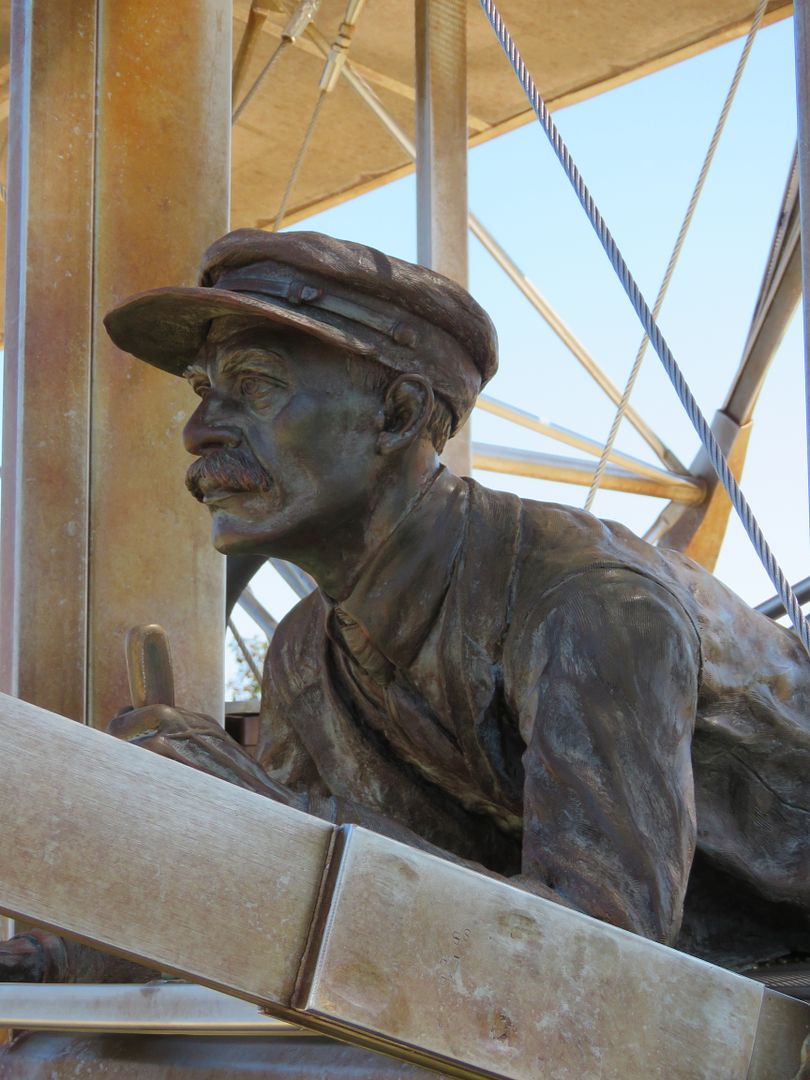
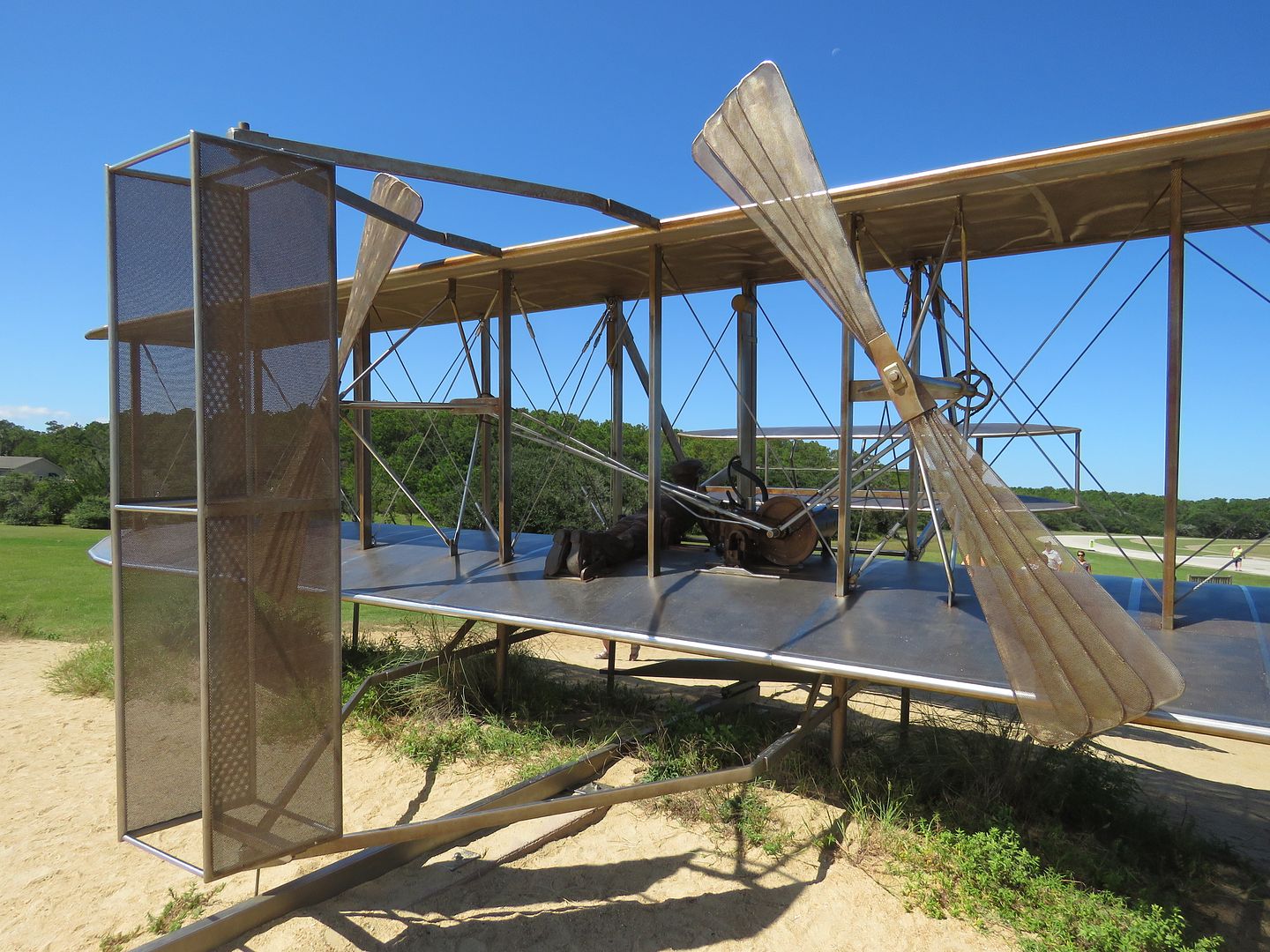
No comments:
Post a Comment